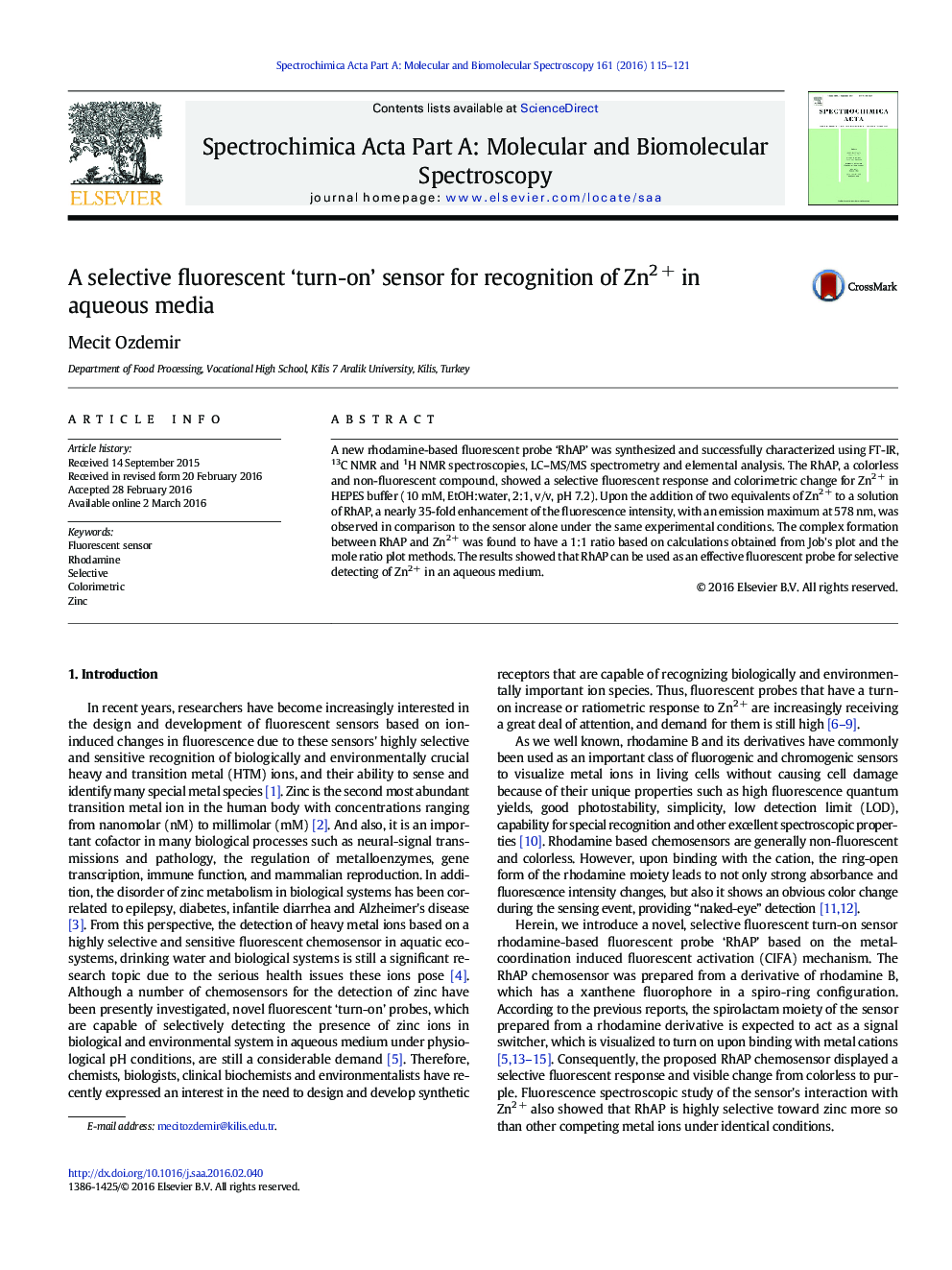| Article ID | Journal | Published Year | Pages | File Type |
|---|---|---|---|---|
| 1228856 | Spectrochimica Acta Part A: Molecular and Biomolecular Spectroscopy | 2016 | 7 Pages |
•Synthesis and characterization of a new fluorescent sensor ‘RhAP’•The selectivity of RhAP for Zn2 + was investigated by spectroscopic techniques.•The results showed that the sensor may be further performed for the selective detection of Zn2 + in aqueous media.
A new rhodamine-based fluorescent probe ‘RhAP’ was synthesized and successfully characterized using FT-IR, 13C NMR and 1H NMR spectroscopies, LC–MS/MS spectrometry and elemental analysis. The RhAP, a colorless and non-fluorescent compound, showed a selective fluorescent response and colorimetric change for Zn2 + in HEPES buffer (10 mM, EtOH:water, 2:1, v/v, pH 7.2). Upon the addition of two equivalents of Zn2 + to a solution of RhAP, a nearly 35-fold enhancement of the fluorescence intensity, with an emission maximum at 578 nm, was observed in comparison to the sensor alone under the same experimental conditions. The complex formation between RhAP and Zn2 + was found to have a 1:1 ratio based on calculations obtained from Job's plot and the mole ratio plot methods. The results showed that RhAP can be used as an effective fluorescent probe for selective detecting of Zn2 + in an aqueous medium.
Graphical abstractProposed binding mode of sensor RhAP and Zn2 + in EtOH–water (2:1, v/v) solution.Figure optionsDownload full-size imageDownload as PowerPoint slide
